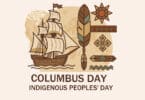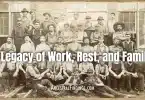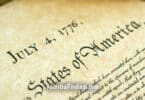On this wonderful day of gratitude, togetherness, and thankfulness for all that our Lord has given us, I thought it would be the perfect time to explore the rich history of Thanksgiving and discover some fascinating stories behind this beloved holiday.
Thanksgiving is more than just a day of feasting on turkey and pie; it’s a holiday steeped in history and traditions that have shaped it over the centuries. So, whether relaxing after a delicious meal or spending quality time with loved ones, let’s journey through the tale of Thanksgiving and uncover some interesting historical tidbits you might not have heard.
Our story begins in 1620, when a group of English settlers known as the Pilgrims set sail on the Mayflower, seeking a new land where they could freely practice their faith. After a challenging 66-day voyage across the Atlantic Ocean, they arrived at what we now know as Cape Cod, Massachusetts. However, they didn’t settle there immediately. After some exploration, they established the Plymouth Colony.
The first winter was incredibly harsh, and 102 passengers did not survive. Those who remained faced numerous challenges but were determined to build a new life. Their faith played a significant role in sustaining them through these hardships.
Their fortunes began to change when they encountered Squanto, an English-speaking member of the Patuxet tribe. Squanto had an extraordinary story himself: Years earlier, he had been captured by an English sea captain, sold into slavery, escaped to London, and eventually returned to his homeland.
Squanto became an invaluable friend and guide to the Pilgrims. He taught them how to cultivate corn, extract sap from maple trees, catch fish in the rivers, and avoid poisonous plants. With his assistance and the support of the Wampanoag tribe led by Chief Massasoit, the Pilgrims learned to adapt to their new environment.
In the autumn of 1621, after their first successful harvest, Governor William Bradford organized a celebratory feast and invited their Native American allies to join them. This three-day festival included meals, games, and mutual entertainment. The Pilgrims saw this as an opportunity to thank God for His blessings and provision. While turkey might not have been the centerpiece, they likely enjoyed venison, wild fowl, fish, and harvested crops like corn and pumpkins. This gathering is often remembered as the first Thanksgiving, a time of fellowship and gratitude.
Thanksgiving as a holiday wasn’t immediately established after this feast. In fact, various colonies and states sporadically celebrated Thanksgiving for many years, often in honor of military victories, abundant harvests, or other blessings. These observances were usually marked by church services and personal reflection on God’s goodness.
Thanksgiving wasn’t until the 19th century that it took shape as a national holiday. Enter Sarah Josepha Hale, a writer and editor you might know as the author of “Mary Had a Little Lamb.” She was a persistent advocate for making Thanksgiving a national day of thanks to God. For 17 years, she wrote letters to governors, senators, and five U.S. presidents, passionately arguing that a unified day of gratitude would help heal and strengthen the nation.
Her efforts finally paid off when, in 1863, President Abraham Lincoln issued a proclamation declaring a national Thanksgiving Day to be held each November. He did this amid the Civil War, expressing hope that the nation would seek God’s guidance and give thanks for His blessings even during such a tumultuous time. Lincoln called upon Americans to “commend to His tender care all those who have become widows, orphans, mourners, or sufferers” and to heal the nation’s wounds.
Now, let’s talk about some lesser-known facts that add color to the history of Thanksgiving. Did you know the Macy’s Thanksgiving Day Parade, a beloved tradition today, started in 1924? It was originally called the Macy’s Christmas Parade and featured live animals borrowed from the Central Park Zoo. It wasn’t until 1927 that the famous giant balloons debuted, with Felix the Cat being the first.
Football on Thanksgiving has roots that go back even further. The first Thanksgiving football game was played in 1876 between Yale and Princeton. The NFL made Thanksgiving games a regular part of the schedule in 1934, starting with the Detroit Lions, a tradition that continues today.
Another interesting tidbit involves the presidential turkey pardon. The tradition of sparing a turkey from the Thanksgiving table is often attributed to President Harry Truman in 1947. However, there is no evidence he actually pardoned a turkey. The modern practice was formalized by President George H.W. Bush in 1989, and it’s been an annual White House tradition ever since.
Thanksgiving has also had an unexpected impact on American culture. For instance, the Swanson company inadvertently invented the TV dinner in 1953 because they overestimated the demand for turkey and were left with 260 tons of frozen birds. A salesman suggested packaging the surplus turkey with sides in aluminum trays, and the convenience of the TV dinner was born.
Over the years, Thanksgiving has embraced new traditions and reflects the diverse fabric of American society. Immigrants have added their own flavors and customs, enriching the holiday. For many families, it’s not just about the traditional turkey dinner; it’s about incorporating dishes and rituals from their own cultural backgrounds.
As we reflect on this rich history, it’s clear that Thanksgiving is a holiday that has grown and adapted over time, much like our nation itself. It’s a day that brings people together, encouraging us to express gratitude for the blessings in our lives and to cherish the time spent with family and friends.
Today, as we gather around our tables, let us remember the spirit of thankfulness that inspired the Pilgrims and has continued through the generations. Let’s take a moment to thank our Lord for His abundant blessings, the food we enjoy, the family and friends we hold dear, and the freedoms we cherish.
I hope you’ve enjoyed our time together and perhaps learned something new that you can share at your own Thanksgiving table.
From my family to yours, may God bless you, and Happy Thanksgiving!






